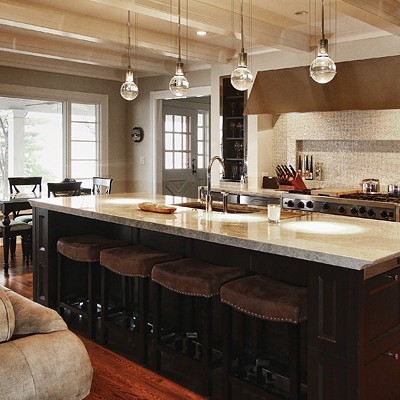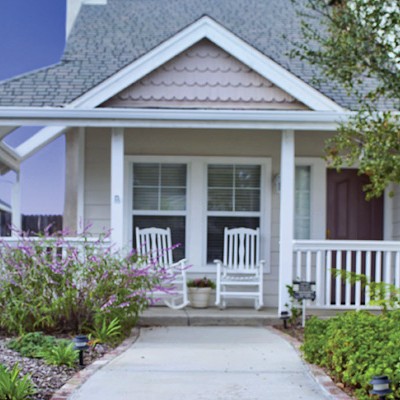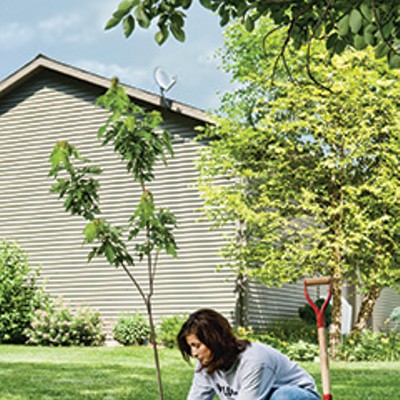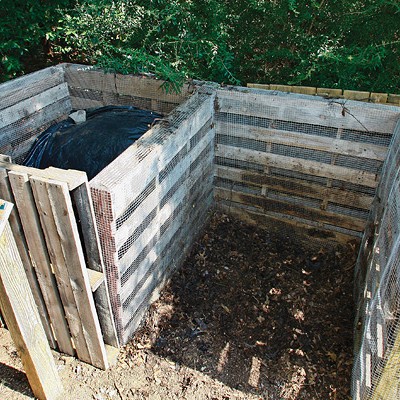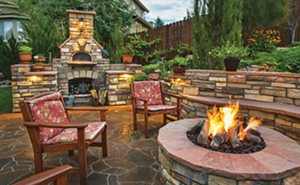
Whether your yard is the size of a football field or a putting green, a well-planned brick or stone patio can make your space into a sanctuary and add value to your home.
While many people can handle building a basic patio themselves, if you envision a work of art, it’s best to hire a professional. And if you already have a patio that needs some love, fixing it up is usually a snap.
The basic idea of a patio has been around for centuries. The word “patio” comes from a medieval Romance language word “patu,” meaning untilled land or communal pasture. In the past, patios have appeared in places like sprawling palaces, seaside villas, English country estates and more. Adding a patio to your yard is a way to bring some of that elegance and old-world charm to your home. The National Association of Realtors says a patio boosts a home’s curb appeal and can increase its resale value.
Modern patios use bricks, stone or concrete pavers which can simulate other materials for a lower cost. To make the paved surface sit at ground level, a shallow hole is dug to accommodate a foundation of concrete or crushed rock and sand. If the patio will be next to a house or other building, the foundation is slightly tapered so that water drains away from the structure. In addition to the paved surface, patios can also feature small ponds, stone benches, lights, planter boxes, fireplaces, grills and brick ovens.
Whether to build a patio yourself or hire a professional depends on your existing skills and the design of the project. If you’re comfortable using basic hand tools, you can probably complete a basic project yourself, although attention to detail is required. Dozens of detailed video walkthroughs by both professionals and do-it-yourselfers are available online through Youtube. A simple rectangular patio is the easiest, involving some digging, using a tape measure and level, and building a basic frame of wood as a guide for laying pavers. If any of those tasks scares you, consider hiring a professional. Likewise, if the project includes plenty of curves or complex designs, irregular stone shapes or hazards like drainpipes, you may want experienced help.
Many professional landscape companies and building material suppliers offer design services. While it sometimes costs extra, getting a designer’s opinion often brings new perspective to a space you may have grown too accustomed to. Designers also know about new materials and best practices, helping you avoid pitfalls such as placing stone benches too close to a fire pit.
The cost of a patio can vary widely, based on several factors like the size of the project, the materials used, any extra features and whether you do it yourself or hire a contractor. A basic 12-foot by 12-foot patio using inexpensive concrete pavers will cost around $700 for materials, excluding any equipment or labor costs. A larger project with retaining walls, seating or other features can easily cost a few thousand dollars. If you plan to eventually sell your house, consider that an extensive project may cost more than it may add to your home’s value.
After several years, dirt can become embedded in a patio surface, and grass can fill the cracks, making the patio look shabby and unkempt. Fixing both problems is simple and will often give an old patio new life. To handle grass and other unwanted flora, use a mix of brute force and chemistry. First, pull any large weeds. Next, use a pressure washer to blast away the plants and any debris that has accumulated in the cracks. This step also cleans the surface of the pavers. Many hardware stores rent pressure washers, and some offer a rotating nozzle attachment which allows you to cover a large area at once.
To prevent weeds from returning, use paver locking sand, also known as polymeric sand, which is coarse sand with a polymer added. It gets sprinkled onto the dry patio and brushed into the cracks with a broom. Once you wet it with a garden hose, the polymer seals the grains of sand together, blocking weeds and dirt for several seasons.
With the right planning and care, your patio can be a place for celebration, contemplation or simply an escape from the busy world.
Contact Patrick Yeagle at [email protected].



